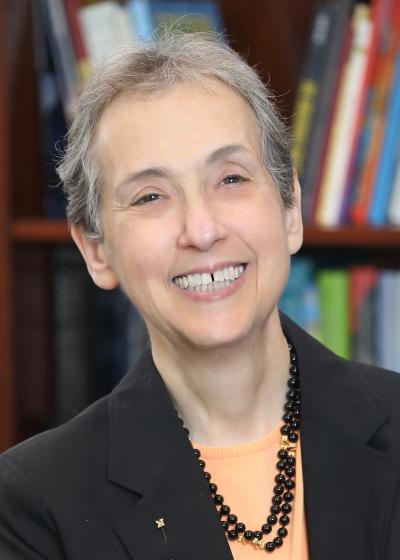From the Deputy Director for Intramural Research
In Science, the Arts, and Real-world Problem-solving, Creativity is Creativity
BY NINA F. SCHOR, DDIR

Have you ever wondered why so many of us in science, technology, engineering, mathematics, and medicine are avocational artists of one sort or another? I daresay many on the campuses of NIH know me better for my music and poetry than my science! And what about the six-stringed artistry of Francis Collins, the line drawings of Nora Volkow, or the historical writings of Jeremy Brown? Think, too, of the scientific art of Santiago Ramón y Cajal displayed in the Porter Neuroscience Building (Building 35). Indeed, in my seven years at NIH, I have met scientists and physicians who are dancers, singers, instrumentalists, writers, visual and textile artists, and photographers.
What is it about science that fuels the artistic muse? Or is it the other way around? Or does some proximate engine fuel both art and science independently and in equal measure?
I have thought long and hard about this for many, many years. How many of my colleagues have made career choices that, for a while, vacillated between science and the arts! I have come to a conclusion that is embarrassingly simple and perhaps trite: Creativity is creativity. After all, what is the philosophical difference between the beauty and complexity of a restriction endonuclease that enables it to cut two strands of DNA at a palindrome and the way two “strands” of music exactly a fifth apart and phase-shifted a measure or two conspire to make a fugue? And how do they both differ from the symmetry and synergy in M.C. Escher’s drawings or the aural appeal of “Le Monocle de Mon Oncle” by Wallace Stevens? The neurologist in me would say they differ only by the sensory network that is activated by them and that brings that impulse to whatever part of the brain it is that is fulfilled by creativity.
This issue of the NIH Catalyst features the art that makes us all human. It also celebrates the 25th birthday of our Biowulf supercomputer (which is probably its 200th birthday in human years) and the amazing extravaganza that was this year’s NIH Research Festival. The word “diverse” does not begin to capture the breadth of the people, the science, the presentation media, or the artistry of the week’s events! Finally, this issue features the power and synergy of the partnership between patients and the biomedical community, another generator of a uniquely creative whole. The Myositis Genetics Consortium brings together patients, families, clinicians, and scientists to better understand, diagnose, treat, and prevent this group of inflammatory disorders of muscle.
We happily and proudly close the 2024 calendar year with this creative exploration of the importance of interfaces between fields and communities!
“Don’t be afraid to juxtapose science and art. They are two sides of the same wonderfully beautiful coin.” — Nina Schor
A poem penned by Nina Schor.
PRAYER (DEMENT ME NOT)
When I am very old,
I pray the irony of the
Wool and linen that walk the streets together
Just before the Spring declares itself
Does not escape me.
I pray my annoyance at the
Scrape-whoosh-whirr of the snow plow ice salter
Persists into another slowly melting season.
And I pray I still remember mama’s face vividly enough
That you look like her to me
Until my dying day.
“Prayer (Dement Me Not)” was first published in Neurology, the medical journal of the American Academy of Neurology.
This page was last updated on Tuesday, November 5, 2024
